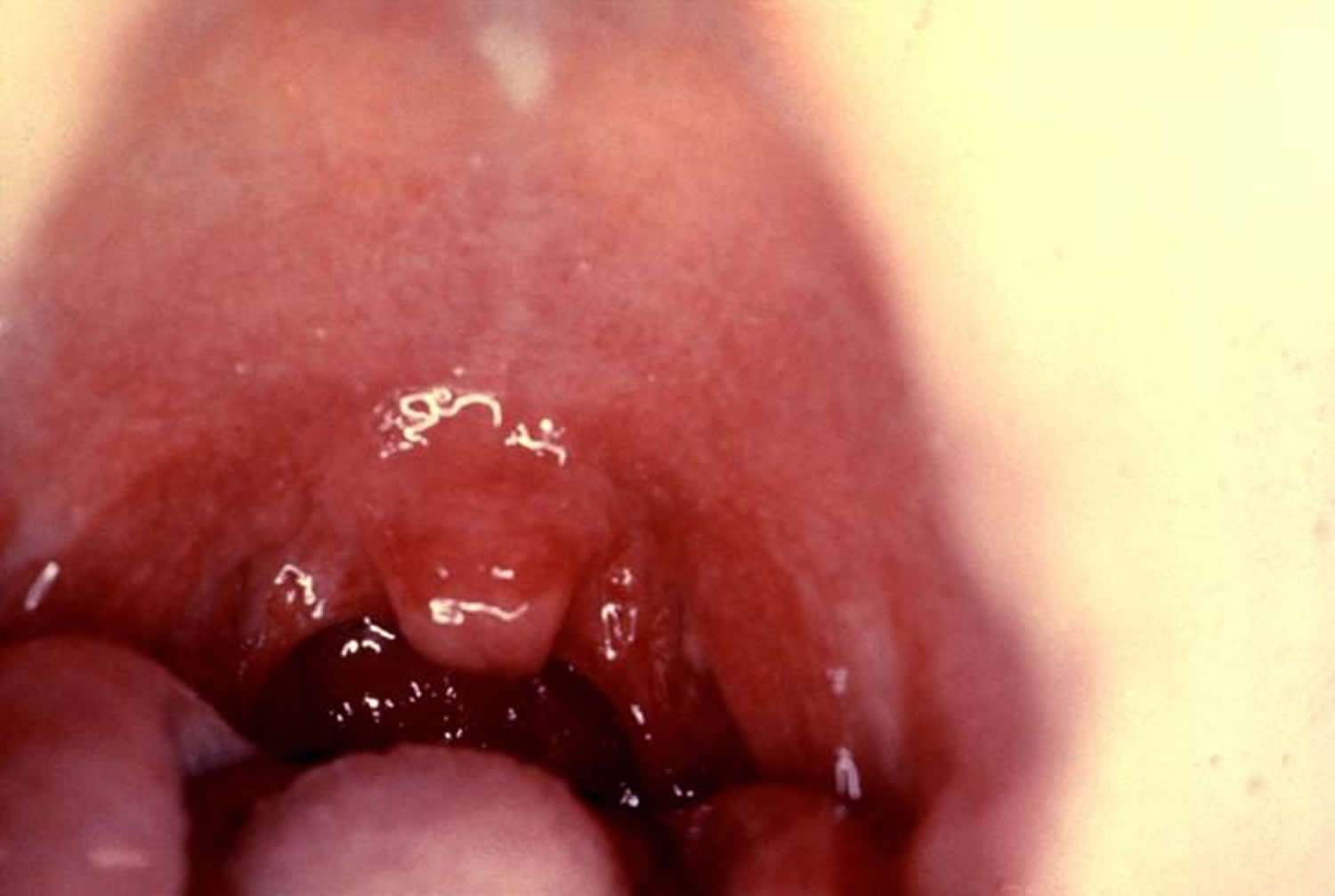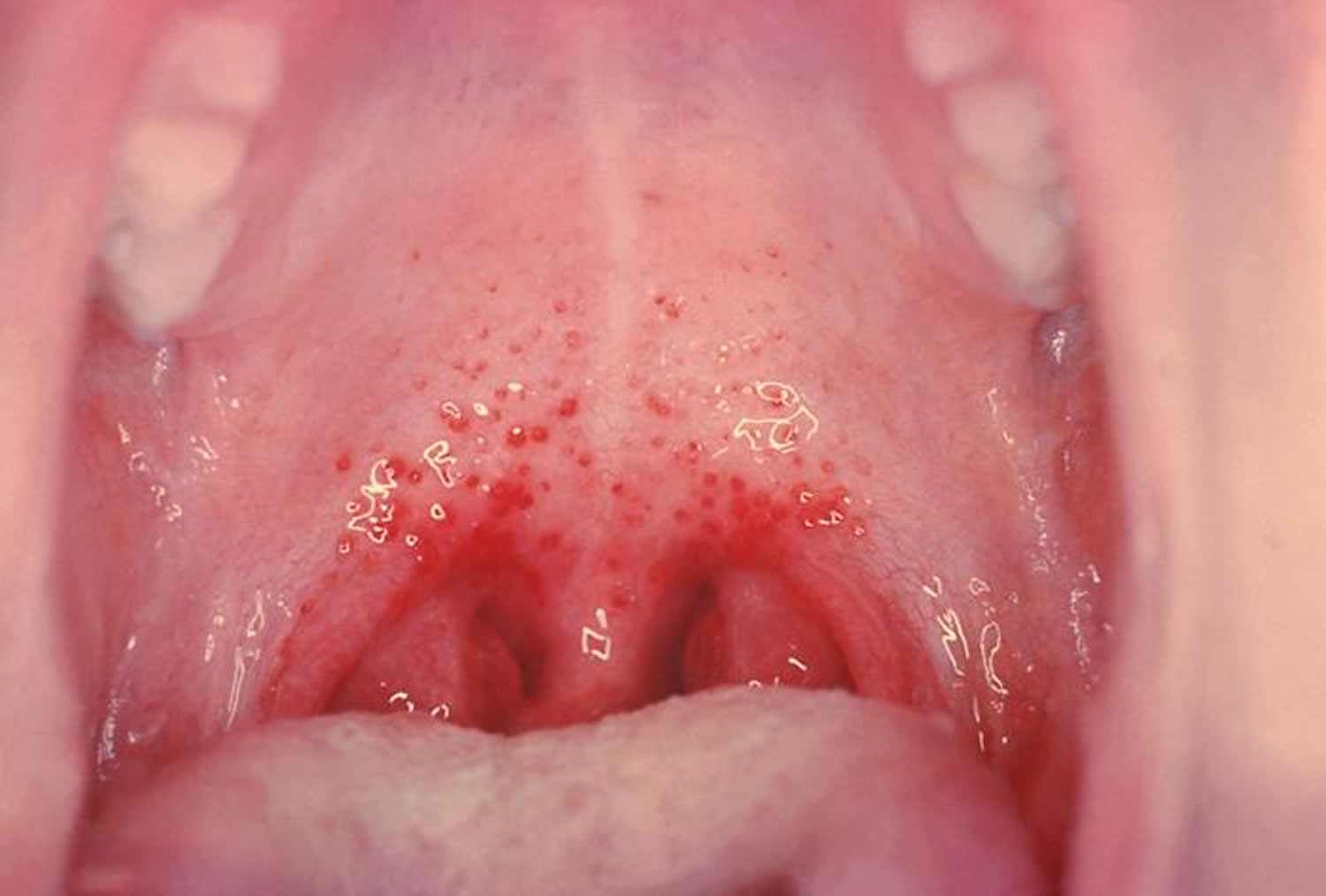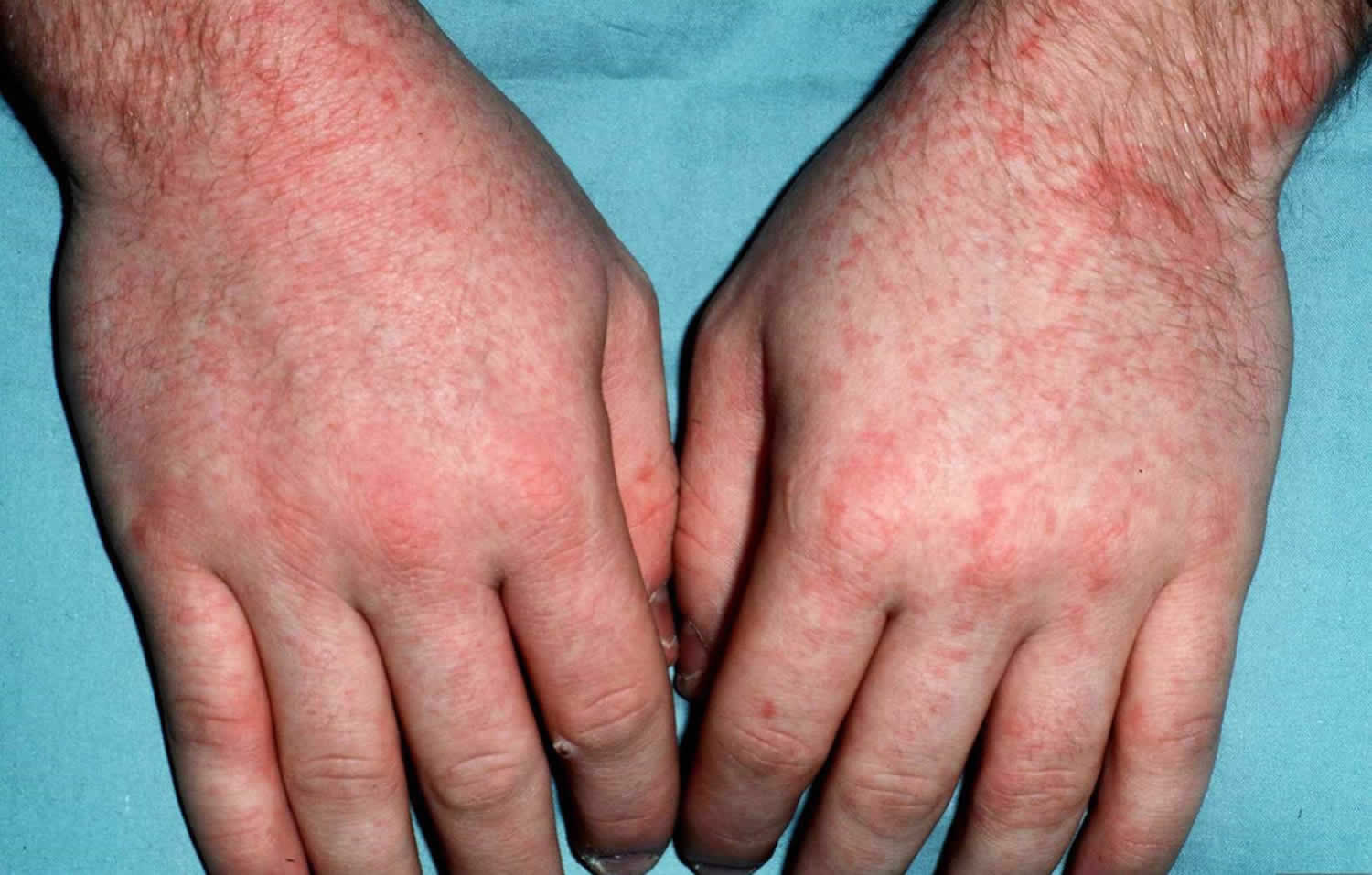Contents
What is Strep throat
Strep throat is an infection of the throat caused by bacteria called Streptococcus pyogenes, also known as group A streptococcus. Most sore throats are caused by viruses, but some are caused by streptococcus. There are different types of streptococci. The type that causes serious sore throats and needs to be treated with antibiotics is a Group A streptococcus (group A strep). Group A strep live in the nose and throat and can easily spread to other people.
How do you get strep throat
When someone who is infected with strep throat coughs or sneezes, the bacteria travel in small droplets of water called respiratory droplets. You can get sick if you breathe in those droplets or if you touch something that has the droplets on it and then touch your mouth or nose. You could also become ill if you drink from the same glass or eat from the same plate as a sick person. It is possible to get strep throat from touching sores on the skin caused by group A strep (impetigo). Although rare, group A strep can be spread through food if it is not handled properly. Pets or household items, like toys, are not known to spread these bacteria.
- Strep bacteria are spread through direct contact with mucus from the nose or throat of persons who are infected, or through contact with infected wounds or sores on the skin.
Group A streptococcus (group A strep) is a bacterium that can cause many different infections, including strep throat, scarlet fever, impetigo, and others. The bacteria live in the nose and throat. When someone who is infected coughs or sneezes, the bacteria travel in small droplets of water called respiratory droplets. One of the ways you can get sick is if you breathe in those droplets or if you touch something that has the droplets on it and then touch your mouth, nose, or eyes.
Strep throat infections are very contagious. They are usually passed directly from person to person.
Strep throat is most common in children between ages 5 and 15, although anyone can get it. Children under 2 years old and adults not exposed to children are much less likely to get strep throat.
- Between 4 and 6 out of every 20 children with a sore throat have strep throat
- Only 1 to 3 out of every 20 adults with a sore throat have strep throat
Is strep throat contagious?
Strep throat is very contagious. Anybody can get it, but most cases are in school-age kids and teens. Infections happen most often during the school year when big groups of kids and teens are in close quarters.
You can pass the strep infection to other people until you have been treated with an antibiotic for 1 to 3 days. Children who have strep throat should not go back to school or day care until their fever has gone away and they have taken an antibiotic for at least 24 hours.
Here are more things you can do to prevent spreading strep throat:
- Frequently wash your hands.
- Cover your mouth when you cough or sneeze.
- Avoid sharing food utensils (such as drinking glasses) while you are sick.
How long is strep throat contagious?
You can be contagious for 2 to 3 weeks if you’re not treated. But if you take antibiotics, you will stop being contagious after about 24 hours. The symptoms rarely last longer than 5 days.
Strep throat complications
Complications can occur after a strep throat infection. This can happen if the bacteria spread to other parts of the body. Complications can include abscesses (pockets of pus) around the tonsils, swollen lymph nodes in the neck, and sinus or ear infections. Other complications can affect the heart (rheumatic fever) or kidneys (post-streptococcal glomerulonephritis).
Inflammatory reactions
Strep infection may lead to inflammatory illnesses, including:
- Scarlet fever, a streptococcal infection characterized by a prominent rash
- Inflammation of the kidney (poststreptococcal glomerulonephritis)
- Rheumatic fever, a serious inflammatory condition that can affect the heart, joints, nervous system and skin
Researchers are investigating a possible link between strep infection and a rare condition called pediatric autoimmune neuropsychiatric disorder associated with group A streptococci (PANDAS). Pediatric autoimmune neuropsychiatric disorder associated with group A streptococci is a term used to describe certain children whose symptoms of neuropsychiatric conditions, such as obsessive-compulsive disorder or tic disorders, are worsened by strep infection.
See your doctor if you or your child has any of these signs and symptoms:
- A sore throat accompanied by tender, swollen lymph glands
- A sore throat that lasts longer than 48 hours
- A fever higher than 101 °F (38.3 °C) in older children, or fever lasting longer than 48 hours
- A sore throat accompanied by a rash
- Problems breathing or swallowing
- If strep has been diagnosed, a lack of improvement after taking antibiotics for 48 hours
What does strep throat look like
Figure 1. Strep throat (note the moderate redness of the oropharynx, i.e., soft palate, and tonsillitis)
Figure 2. Strep throat (note the inflammation of the oropharynx and petechiae, or small red spots on the soft palate)
Figure 3. Strep throat (note the inflammation of the oropharynx and petechiae, or small red spots on the soft palate)
Figure 4. Strep throat rash
Strep throat causes
The cause of strep throat is bacteria known as Streptococcus pyogenes, also known as group A streptococcus.
Streptococcal bacteria are highly contagious. They can spread through airborne droplets when someone with the infection coughs or sneezes, or through shared food or drinks. You can also pick up the bacteria from a doorknob or other surface and transfer them to your nose, mouth or eyes.
Risk Factors for strep throat
Anyone can get strep throat, but there are some factors that can increase your risk of getting this common infection.
Strep throat is more common in children than adults. It is most common in children 5 through 15 years old. It is rare in children younger than 3 years old. Parents of school-aged children and adults who are often in contact with children will have a higher risk for strep throat than adults who are not around children very often.
Close contact with another person with strep throat is the most common risk factor for illness. For example, if someone has strep throat, it often spreads to other people in their household.
Infectious illnesses tend to spread wherever large groups of people gather together. Crowded conditions — such as those in schools, daycare centers, or military training facilities — can increase the risk of getting a group A strep infection.
Strep throat prevention
The following suggestions may help you prevent spread of your strep infection to others:
- Avoid close contact with other people until you have been taking the antibiotic for 24 to 48 hours so they will not be exposed to the strep bacteria.
- Use tissues when you cough and dispose of them carefully.
- Hand washing is the best method of prevention. Wash your hands before you touch food, dishes, glasses, silverware, napkins, etc.
- Use an alcohol-based hand rub if soap and water are not available.
- Wash your hands after you cough and before you touch certain things, like food, dishes, glasses, silverware or napkins.
- Use paper cups, or separate cups, and paper towels in bathrooms instead of shared drinking cups and hand towels.
- Do not share food and eating utensils with others.
- Do not prepare food for others.
People with strep throat should not go to childcare, preschool, school or work until they are no longer contagious.
Antibiotics
Someone with strep throat is usually not able to spread the bacteria to others after they have taken the correct antibiotic for 24 hours or longer. If you are diagnosed with strep throat, you should stay home from work, school, or daycare until you no longer have a fever and have taken antibiotics for at least 24 hours so you don’t spread the infection to others.
Strep throat signs and symptoms
The symptoms of a strep throat infection may include:
- sore, red throat
- painful swallowing
- fever
- chills
- headaches
- muscle aches and pains
- feeling tired
- swollen, tender lymph nodes (“glands”) in the neck
- loss of appetite.
Other symptoms may include a headache, stomach pain, nausea, or vomiting — especially in children. Cough, runny nose, hoarseness (changes in your voice that makes it sound breathy, raspy, or strained), and conjunctivitis (also called pink eye) are not symptoms of strep throat and suggest that a virus is the cause of the illness. Someone with strep throat may also have a rash known as scarlet fever (also called scarlatina).
It usually takes two to five days for someone exposed to group A strep to become ill.
Note: It’s possible for you or your child to have many of these signs and symptoms but not have strep throat. The cause of these signs and symptoms could be a viral infection or some other illness. That’s why your doctor generally tests specifically for strep throat.
It’s also possible for you to be exposed to a person who carries strep but shows no symptoms.
Strep throat diagnosis
Your doctor will conduct a physical exam, look for signs and symptoms of strep throat. Since sore throats can be caused by many viruses and bacteria, it is very important to determine if group A strep is the cause. A rapid strep test or a throat culture is needed. A doctor cannot tell if you have strep throat just by looking at the throat.
A rapid strep test involves swabbing the throat and running a test on the swab to quickly see if group A strep is causing the illness. If the test is positive, doctors can prescribe antibiotics (medicine that kills bacteria in the body). If the rapid strep test is negative, but a doctor still strongly suspects strep throat, then they can take a throat culture swab to see if bacteria grow from the sample. A culture test requires more time to get the results but can be important to use in children and teens because they are at risk of getting rheumatic fever if their strep throat infection is not treated. For adults, it is usually not necessary to do a throat culture following a negative rapid strep test since there is little risk of adults getting rheumatic fever following a strep throat infection.
- Rapid antigen test. Your doctor will likely first perform a rapid antigen test on a swab sample from your throat. This test can detect strep bacteria in minutes by looking for substances (antigens) in the throat. If the test is negative but your doctor still suspects strep, he or she might do a throat culture.
- Throat culture. A sterile swab is rubbed over the back of the throat and tonsils to get a sample of the secretions. It’s not painful, but it may cause gagging. The sample is then cultured in a laboratory for the presence of bacteria, but results can take as long as two days.
Strep throat treatment
If you or your child has strep throat, your doctor will likely prescribe an oral antibiotic. If taken within 48 hours of the onset of the illness, antibiotics reduce the duration and severity of symptoms, as well as the risk of complications and the likelihood that infection will spread to others.
Children taking an antibiotic who feel well and don’t have a fever often can return to school or child care when they’re no longer contagious — usually 24 hours after beginning treatment. But be sure to finish all the medicine. Stopping early can lead to recurrences and serious complications, such as rheumatic fever or kidney inflammation.
Someone who has no symptoms but tests positive for strep throat is known as a “carrier.” Carriers usually do not need antibiotics. They are less likely to spread the bacteria to others and very unlikely to get complications. If a carrier gets a sore throat illness caused by a virus, the rapid strep test can be positive even though the illness is not caused by the bacteria that cause strep throat. If someone keeps getting a sore throat after testing positive for strep throat and being treated with the right antibiotics, this may be a clue that the person is a strep carrier. Talk to your healthcare professional if you think you or your child may be a strep carrier.
Antibiotics for strep throat
Unlike sore throats caused by viruses, strep throat is treated with antibiotics. Either penicillin or amoxicillin are recommended as a first choice for people who are not allergic to penicillin, but other antibiotics can be used to treat strep throat in people who are allergic to penicillin (learn more about sore throats and antibiotic use). Antibiotics help shorten how long someone is sick, prevent spreading the disease to others, and prevent getting complications like rheumatic fever.
The symptoms of strep throat may go away as soon as 24 hours after you start treatment. The symptoms rarely last longer than 5 days.
With antibiotic treatment, you or your child should start feeling better in a day or two. Call your doctor if there’s no improvement after taking antibiotics for 48 hours.
Strep throat in toddlers home remedies
To relieve throat pain and reduce fever, try over-the-counter pain relievers, such as ibuprofen (Advil, Motrin IB, others) or acetaminophen (Tylenol, others).
Use caution when giving aspirin to children or teenagers. Though aspirin is approved for use in children older than age 3, children and teenagers recovering from chickenpox or flu-like symptoms should never take aspirin. This is because aspirin has been linked to Reye’s syndrome, a rare but potentially life-threatening condition, in such children.
If you have a strep throat, there are a number of different ways that might help ease your symptoms:
- Make sure you have enough fluids. Drink clear soup, cold drinks, and other clear, nutritious liquids. If eating hurts your throat, don’t force yourself to eat solid food. When you are able to eat more foods, choose healthy food to give you strength and to help fight the infection.
- Eat soothing foods. Easy-to-swallow foods include broths, soups, applesauce, cooked cereal, mashed potatoes, soft fruits, yogurt and soft-cooked eggs. You can puree foods in a blender to make them easier to swallow. Cold foods, such as sherbet, frozen yogurt or frozen fruit pops also may be soothing. Avoid spicy foods or acidic foods such as orange juice.
- Do not smoke. Do not breathe second-hand smoke. Cigarette smoke can irritate a sore throat and increase the likelihood of infections such as tonsillitis. Avoid fumes from paint or cleaning products, which can irritate throats and lungs.
- Gargle with salt water (children shouldn’t try this).
- Suck on lozenges or hard candy.
- Don’t talk a lot. Rest your voice.
- Use a humidifier or vaporizer to add moisture to the air. Adding moisture to the air can help ease discomfort. Choose a cool-mist humidifier and clean it daily because bacteria and molds can flourish in some humidifiers. Saline nasal sprays also help to keep mucous membranes moist.
- Put warm compresses on your neck.
Get plenty of rest. Sleep helps your body fight infection. If you have strep throat, stay home from work if you can. If your child is ill, keep him or her at home until there’s no sign of fever, and he or she feels better and has taken an antibiotic for at least 24 hours.
How to gargle with salt water
- Dissolve half a teaspoon of salt in a glass of warm water – warm water helps salt dissolve.
- Gargle with the solution then spit it out – don’t swallow it.
- Repeat as often as you like.
If you have a fever, rest and limit your activities until the fever is gone. Ask your doctor or pharmacist if you can take paracetamol, or ibuprofen to reduce your fever and to relieve pain.
Make sure you don’t pass strep throat to anyone else by washing your hands and covering your nose and mouth when you cough or sneeze.








